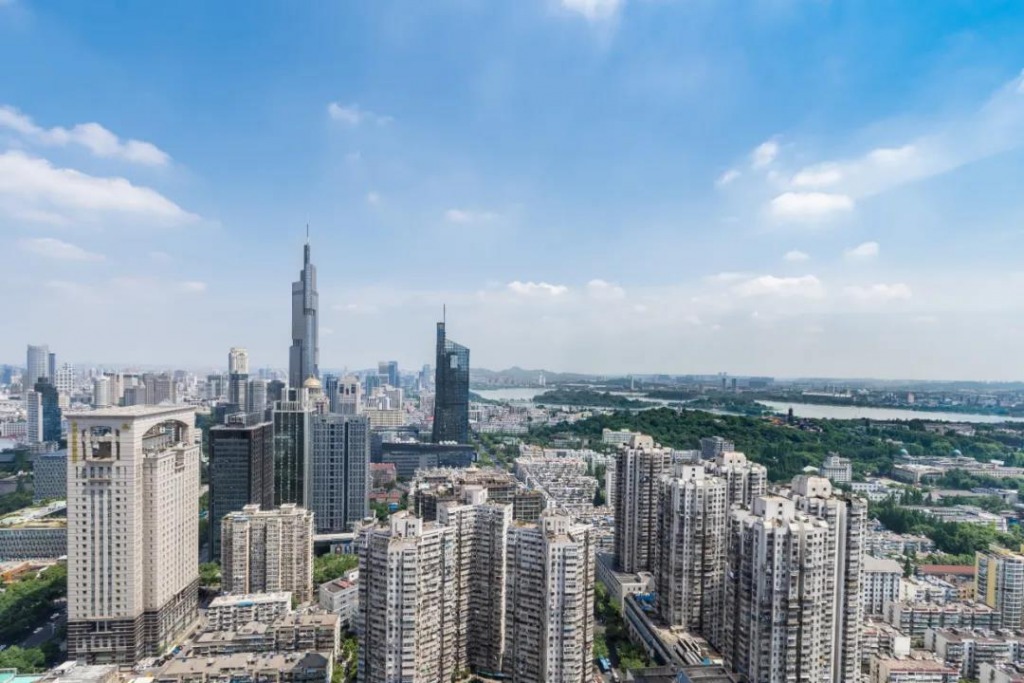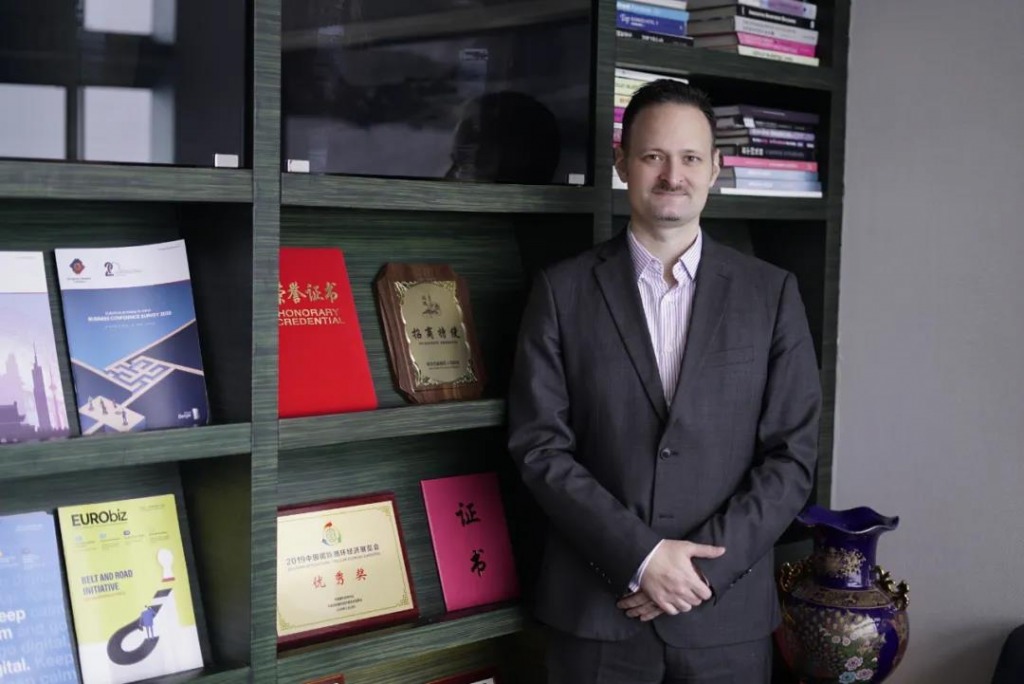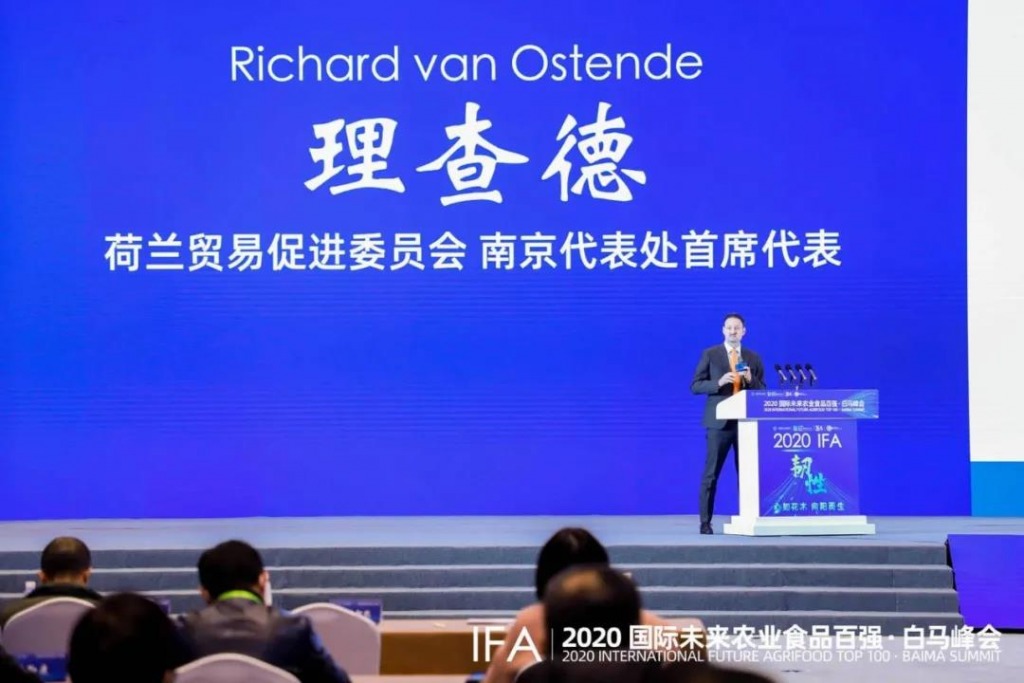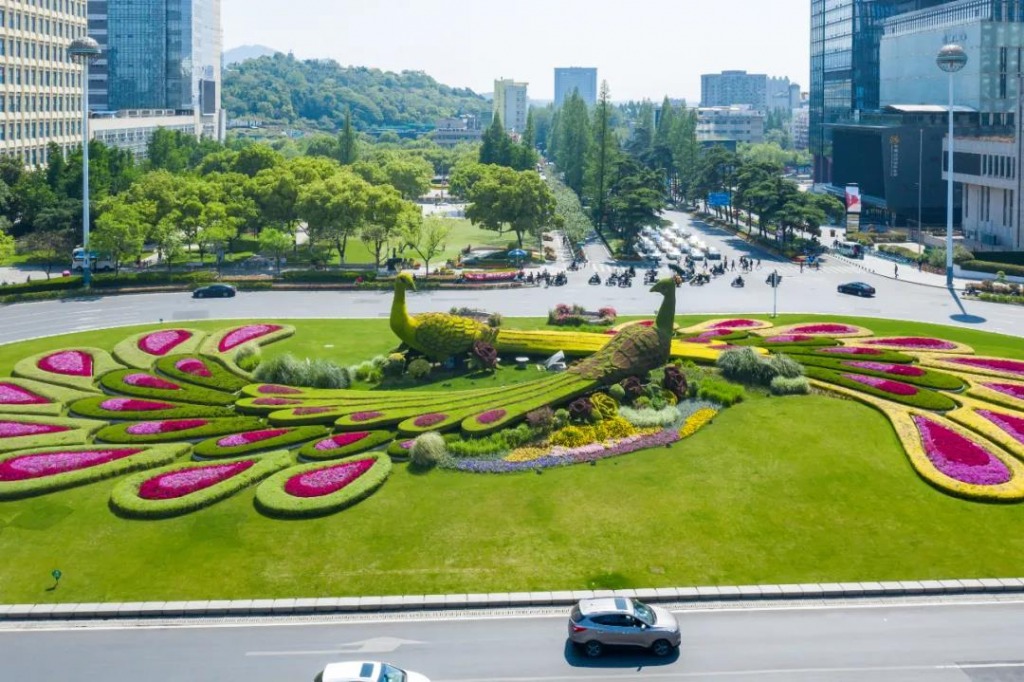Nanjing Drum Tower(Gulou), built in 1382, was an important building and landmark of the capital of the Ming Dynasty. Gulou District of Nanjing , with its age of 600 years old is still a symbol of the city. Zifeng Building which gains its charm against the backdrop of the red ancient wall should be the best proof as the tallest building in Jiangsu Province.
The 47th floor of Zifeng Building is where the Nanjing office of the Netherlands Business Support Council is located, which is funded by the Dutch central government to assist Dutch companies and commercial institutions to expand potential overseas market. It is also set up to help local companies to obtain Dutch information on its trade, investment and scientific research cooperation opportunities.
Richard, the chief representative of the Nanjing Office of the Netherlands Business Support Council is a ” Old China Hand ” who has married a Chinese wife and loves Chinese history and architecture. Richard came to China in 2007 and worked in Beijing, Shanghai, Suzhou before settling in Nanjing in 2018, when he fell in love with this ancient city with modern charm. In Richard’s eyes, Nanjing balances the elements of Beijing and Shanghai, with the former of rich history, and the later known for modern business. It boosts friendly business environment and maintains its historical heritage. His favorite Nanjing local Pidu noodles is a natural combination with a variety of ingredients with each of them preserving their own tastes. The same story can be found in this great city: gentle yet inclusive.

Speaking of Netherlands, people are always impressed by its windmills, tulips and bicycles. Indeed, like China, the Netherlands, is also known for its popular use of bicycles. You can get a glimpse of the country’s bicycle culture from a bicycle shown at the Nanjing office.
But what many people are not familiar with is the pivotal position of the Netherlands in shipping. Richard’s hometown, Rotterdam, has the largest port in Europe, connecting important ports from five continents of Europe, America, Asia, Africa and Australia, and is known as the “gateway to Europe”. As the special envoy for investment promotion appointed by Gulou District, Richard sees great potential for cooperation between the Netherlands and Nanjing in shipping. Nanjing used to have the largest royal shipyard in the world. The treasure ship of Zheng He set sail from here more than 600 years ago, embarking on the road to explore the new world. More than 600 years later, Nanjing is actively giving a full play of its own advantages and accelerating the building of an industrial development ecosystem featuring aggregation and sharing of shipping elements, completing shipping supporting facilities, shipping headquarters sails and shipping capacity expansion and upgrading. Richard is also looking forward that the rich shipping development experience of the Netherlands can help the shipping industry in Nanjing to make new breakthroughs and forge ahead in challenges.

Looking out from the window in Richard’s office, the Gulou Campus of Nanjing University distinguishes itself from rows of tall buildings with history of more than 100 years. The scientific research institutes in colleges and universities in Nanjing, and the developed scientific and educational resources have been a strong driving force for the city’s economic development. As home to most university resources, the Gulou District has attracted 3 Nobel Prize winners to innovate and start businesses here. At present, the building of urban silicon lanes has become a new way for Nanjing to take advantage of its scientific and educational resources.
It is worth mentioning that the Netherlands scientific research capability ranks 12th in the world, with more than a dozen Nobel Prize winners there so far. Richard notes that compared with China, Netherlands universities are more closely connected with the market where the “Golden Triangle” composed of government, scientific research institutions and business companies prevails in various industries. As the chief representative of the Nanjing Office of Netherlands Business Support Council, he will actively involve in the Netherlands “Golden Triangle” model to take root and prosper in Nanjing.

The Republic China Mansion Block of Yihe Road in Gulou District is typical in showing Nanjing’s charm as an international city. Nowadays, Nanjing has gathered numerous Fortune Global 500 companies , such as Bosch Electric、BASF、LG、Philips、Sharp, showing the internationalization of the city with an inclusive attitude. Richard, who has been working and living in Nanjing for more than two years, also deeply feels the harmony between the ancient and the modern elements in this city and between the coexistence of tradition and openness. In his view, this is what an international city is. More possibilities are certainly about to burst when more people with different historical and cultural backgrounds meet with collisions of their different ideas.
It is worth mentioning that the Netherlands scientific research capability ranks 12th in the world, with more than a dozen Nobel Prize winners there so far. Richard notes that compared with China, Netherlands universities are more closely connected with the market where the “Golden Triangle” composed of government, scientific research institutions and business companies prevails in various industries. As the chief representative of the Nanjing Office of Netherlands Business Support Council, he will actively involve in the Netherlands “Golden Triangle” model to take root and prosper in Nanjing.
The Republic China Mansion Block of Yihe Road in Gulou District is typical in showing Nanjing’s charm as an international city. Nowadays, Nanjing has gathered numerous Fortune Global 500 companies , such as Bosch Electric、BASF、LG、Philips、Sharp, showing the internationalization of the city with an inclusive attitude. Richard, who has been working and living in Nanjing for more than two years, also deeply feels the harmony between the ancient and the modern elements in this city and between the coexistence of tradition and openness. In his view, this is what an international city is. More possibilities are certainly about to burst when more people with different historical and cultural backgrounds meet with collisions of their different ideas.





